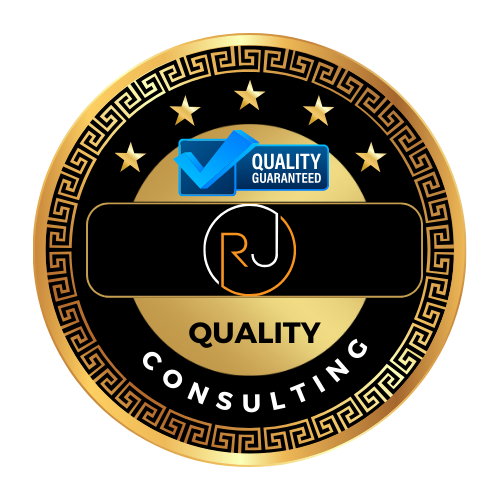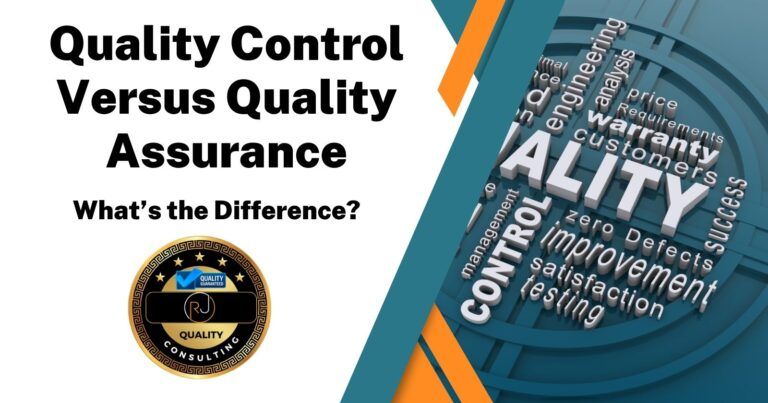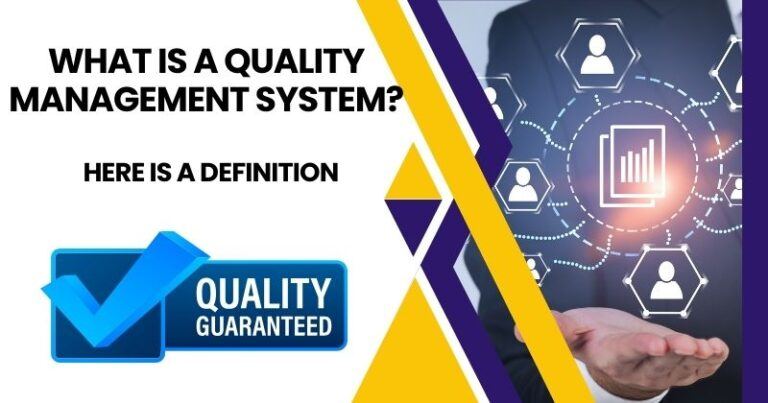What Is The Purpose Of A Quality Management System (QMS)?
I’m going to break down what a Quality Management System (QMS) really means for an organization, and you’re going to find out why it’s much more than a tick-box exercise for compliance. So, what is the purpose of a quality management system? At its core, a QMS is a collection of business processes aimed squarely at consistently meeting and exceeding customer requirements. Its structured purpose is to deliver not just what your customers expect, but also to surprise and delight them. It’s about implementing the Plan, do, check, act cycle for continuous improvement.

Now the significance of this model being a circle is, that it never ends. Continual improvement is a process that should always be in motion. It is assumed that there is always room for improvement. This is the reality that a QMS can provide, as long as the organization embraces its true nature.
This isn’t just about following a set of procedures; it’s also about embedding a culture of quality throughout your business. The purpose of a quality management system is akin to having a detailed roadmap that guides all members of your organization. I’m here to help you understand how a QMS provides clarity on who does what, when, and how, thereby ensuring a harmonious symphony of actions aimed at achieving customer satisfaction. In a nutshell, a QMS is a system that allows you to “say what you do and do what you say” based on continual improvement.
Book a FREE 45-Minute Consultation
During the Consultation We Will Give You a Clear Direction and Path For You to Move Forward with Your Certification or Accreditation Goals
In my opinion, one of the reasons a QMS is so powerful is because it’s versatile. It caters to the intricate details of your organization’s offerings. Whether it’s a product or a service, a QMS scrutinizes the lifecycle, leaving no stone unturned to ensure quality at every stage. The goal? Drive organizational excellence by adhering to a systematic approach to quality management. That’s the commitment a QMS brings to the table.
Now, a natural question might be, ‘What kind of issues does a QMS address?’ Well, I’m glad you asked. Imagine a scenario where mistakes are made, and instead of learning from them, they keep recurring. Or what about departments working in silos with minimal visibility into each other’s activities? And let’s not forget how a high customer churn rate can signal a red alert for any business. In the following section, I’m going to show you how a QMS can turn these challenges into triumphs.
Addressing Operational Pain Points: How QMS Offers Solutions

Imagine constantly dealing with the frustration of errors that keep cropping up, despite your team’s best efforts. This is where a well-designed Quality Management System (QMS) turns the tides. By addressing common operational snags, QMS provides clear, actionable pathways to improve performance and customer satisfaction. The organization needs to learn that errors are not always a person’s fault, or even a team’s fault. It is simply the idea that it is the process itself that needs improvement.
Repeated mistakes are not just a nuisance; they are a symptom of deeper process inefficiencies. A QMS zeroes in on these recurring issues, providing the tools and framework to analyze and rectify them. Think of it as your operational detective, uncovering the ‘why’ behind mistakes and helping you prevent them in the future.
In many organizations, the right hand doesn’t know what the left is doing, leading to a lack of inter-departmental visibility. QMS serves as the bridge, connecting diverse departments and ensuring that everyone is on the same page. Information silos are broken down, enabling a cohesive approach to quality that permeates the entire organization. This is true, whether you are running a manufacturing company in accordance with an ISO 9001 standard, or an Aerospace company in accordance with AS9100 Certification Requirements.
Consider the high customer churn rate, negative reviews, or declining profits as warning signs that your quality management might be off track. QMS doesn’t just put out fires; it restructures your organizational practices to prevent these blazes from igniting in the first place. By aligning every process with customer satisfaction metrics, QMS helps in retaining customers, winning back lost ones, and improving your bottom line.
The Anatomy of a Quality Management System: Strategy, Process, and Technology

A Quality Management System isn’t something that operates in isolation; it’s woven into the very fabric of an organization. Understanding its components is vital for ensuring that the system functions effectively. There are three major facets to this: QMS as Technology, QMS as a Strategy, and QMS as a Process. Each plays a distinct yet interrelated role in bolstering the overarching quality of an organization’s output.
First up, let’s talk about QMS as Technology. Think of it as the digital infrastructure that supports all your quality management efforts. It’s often a cloud-based product that becomes the central hub for recording, reporting, and analyzing your processes. This tech aspect is crucial as it collects data from various interactions and makes it accessible for further use.
Switching gears to QMS as a Strategy, it’s all about the bigger picture. It’s a comprehensive approach where quality management is embedded into the business philosophy. Every decision and policy is influenced by the quest to meet and exceed customer expectations. This strategic layer ensures that quality isn’t an afterthought but a driving force.
And finally, there’s QMS as a Process. This is the system put into practice—the protocols, the workflows, the documented information that is followed to a tee every single time. It’s the standardized approach across the business that manages and nurtures information, ensuring that every action is repeatable and yields the same high-quality results.
You can see how all these components of a QMS are necessary. Without the technology piece, you have no foundation. Forego the strategy, and you lack direction. Skip the process, and consistency flies out the window. Together, they make up the robust framework that is essential for the success and the continuous improvement of an organization.
The Digital Edge: Leveraging QMS Software for Business Agility

In the digital age, a Quality Management System (QMS) is no longer confined to clipboards and filing cabinets. I’m talking about QMS software, a dynamic tool that serves as the nerve center for various business activities. This includes handling customer feedback, managing internal issues, overseeing policies, and more. All these elements represent cogs in the wider machinery that is your business, and QMS software keeps it all synchronized.
Here’s where it gets interesting. A robust QMS software doesn’t just record what happens; it’s also your analyst, giving you direct insights into process efficiencies and bottlenecks. With data at your fingertips, driving improvement initiatives becomes more than guesswork; it’s a strategic move grounded in facts. Talk about having a crystal ball!
We’re not finished yet. By adopting QMS software, you’re giving your team a unified platform. Document control, risk management, supplier performance—you name it, the software tracks it. This holistic overview translates into informed decision-making that shapes future successes.
And guess what? Transitioning to this digital system means you’re embracing continuous improvement. It’s a key tenet of any QMS to evolve and adapt, and software makes this transition seamless. I mean, with real-time data flowing through a digital platform, your ability to respond to challenges is pretty much in the fast lane!
Now, this brings the question, what happens when you have all your quality processes digitized and streamlined? Well, there’s two ways to react to this. Some might see it as the endgame—’We’ve automated, so we’re good to go.’ I shoot for the latter, which is seeing it as just the beginning of a journey towards excellence.
Solidifying Success Across Departments
Maybe you’re not just looking for the usual spiel about quality management systems (QMS) being a ‘business must-have.’ Instead, you’re interested in the tangible, department-specific benefits that ripple out across the entire business. I’m going to give you the inside scoop on how implementing a QMS can bring about a symphony of improvements, cutting across various business functions.
Let’s start with Customer Service. Here, a QMS isn’t merely a tool; it’s a game-changer. It reduces complaints –not just by fixing them as they come, but by preventing them in the first place. How? By proactively identifying potential issues and addressing their root causes. This means customers are happier, less likely to take their business elsewhere, and they might even become vocal advocates for your brand.
Now, pivot to Human Resources (HR). You’re likely aware that an effective HR department is the cornerstone of a thriving business. A QMS speeds up the onboarding process, meticulously manages training records, and pinpoints exactly where you’re going to need more hands-on-deck. HR can ensure that every employee is up-to-par on the latest procedures, making for a workforce that’s competent and compliant, thanks to a guiding hand from a well-oiled QMS.
Sales & Marketing, you ask? Absolutely! A robust QMS equips your team with hard data and vivid examples to strengthen their pitches. It’s about knowing – and showing – why your company stands out from the crowd, helping your sales force articulate that competitive edge in every conversation they have with potential customers.
Procurement is part of this performance symphony, too. Managing supplier performance, keeping credentials up to date, and accessing audit results are all streamlined with a QMS. Think of it as having a vigilant sentinel that ensures every chain link in your supply is as strong as possible.
This leads us perfectly into the next section, where I’ll talk about how QMS software – not just in theory but in practical, everyday use – prevents those costly mistakes that can tarnish a brand’s reputation and keep operational nightmares at bay. Trust me, you’ll want to hear about how the right software puts you in the driver’s seat of your business’s quality journey, so stay tuned.
Harnessing QMS Software for Operational Excellence and Sustainable Growth

Now you know that a Quality Management System isn’t just a bureaucratic requirement; it’s a robust strategy to elevate your entire organization. From cutting down on costly mistakes to safeguarding your hard-earned reputation, QMS software acts swiftly to prevent and respond to Quality incidents.
With seamless integration into your daily operations, QMS software becomes an unseen hero, streamlining workflows in a way that feels almost effortless. Clear cut communication channels and systematic process management contribute significantly to this ease, turning potential chaos into coordinated clarity.
The increase in productivity isn’t just a happy accident. It’s the result of meticulous planning and finely-tuned risk management facilitated by QMS tools. Consistent, accurate forecasting and an unwavering focus on improving quality metrics are the backbone of this uptick in efficiency.
But perhaps the most compelling advantage is the improvement in customer satisfaction and loyalty. By deploying a QMS, your clients receive nothing but the best, ensuring they keep coming back. And when it’s time to vie for high-stakes business deals, ISO standard certifications backed by QMS efficiency can be your ace in the hole.
Adopting a QMS, especially a software-driven one, is about embracing a commitment to quality that permeates every aspect of your business. It’s about choosing to champion operational excellence and strategic growth, underpinned by a system that never sleeps. Because when you aim for the stars with your quality, you ensure that your business not only survives in the competitive market landscape but thrives. Now if you want to learn more about the steps to implementing a QMS, check out this article.
Concluding Thoughts – What Is the Purpose of a Quality Management System?
A Quality Management System (QMS) is not just a regulatory necessity but a strategic cornerstone for continuous improvement and customer satisfaction. It’s an evolving framework that adapts to an organization’s unique needs, ensuring quality at every operational level. QMS transcends traditional compliance, embedding quality into the company’s ethos and across all departments.
The integration of QMS software revolutionizes traditional processes, offering a platform for informed decision-making and efficient management. This digital transformation is crucial for real-time problem-solving and strategic growth, positioning businesses for success in a competitive landscape.
In summary, adopting a QMS signifies a commitment to excellence and a journey towards sustainable organizational growth. It’s about building a culture where quality is the guiding principle, ensuring every product and service meets the highest standards, thereby securing a strong market position and customer loyalty.




